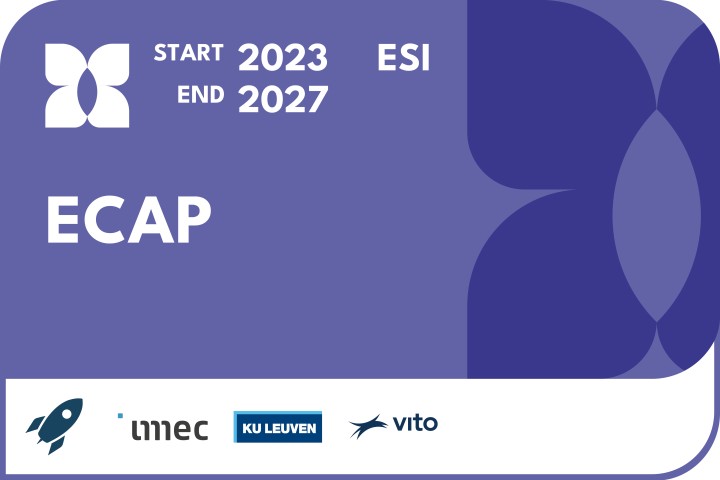ECAP
Electrochemical CO2-based acrylic acid production.

An electrochemical carboxylation platform is proposed to produce acrylic acid, starting from ethylene and CO2, representing an opportune value-upgrading pathway for renewable bulk chemicals/olefins. In this electrification approach, reduced product footprints can be introduced while minimizing the use of (scarcely available) renewable electricity.
To date, examples of direct incorporation of CO2 in bulk chemicals remain scarce. Since the synthesis of Aspirin by Kolbe in 1859, more than a century passed till the reaction of CO2 with epoxides gained ground, resulting in the polyethercarbonate polyols. The ECAP proposal aims at producing acrylic acid (AA) directly from CO2 and ethylene, requiring 129.1 kJ/mol AA (∆GR) to drive the reaction, as alternative for the state-of-the-art production, dominated by gas phase oxidation of fossil-based propylene on (doped) Bi molybdate catalysts. High selectivity remains challenging here, i.e. 85-90% reported for the single step process. Unavoidably, part of the feedstock is lost as CO2. Extensive research has been devoted to the ethylene-CO2 coupling in the presence of Na bases and homogeneous Pd catalyst, forming Na acrylate. Another option would be cathodic °CO2- radical anion generation, that reacts with acetylene; however, relying on coal-sourced feedstock and radical anions, sensitive to moisture and side reactions.
ECAP addresses carbon-smart process intensification and enables economic feasible value chain, by 1) value-upgrading of renewable feedstocks (e.g. from electrified cracking), while maintaining low product CO2 footprints, with 2) minimal renewable electricity supply, and 3) use of CO2, locally captured from point sources or via direct air capture, contributing to MOT3 KPI’s 1 and 3.
In this proposal, direct carboxylation of ethylene by electric power is envisaged, combining the anodic and cathodic half reactions. The cathodic reaction is well known for a wide range of suitable and stable electrodes. The anodic reaction has not been performed as such. However, recent research by one of the applicants has shown that homogeneous second row transition metal catalyst (M) effects oxidative carbonylation of ethylene with CO and water to form acrylic acid. After this reaction, the metal catalyst is left in a reduced state, but can be re-oxidized with O2, at significant TONs. However, this results in direct mixing of ethylene and O2; and even if the reaction temperature is limited, this amounts to explosion risk.
ECAP’s objectives are
-
selection of cell components,
-
design of anodic reaction system,
-
membrane electrode assembly (MEA)/reactor design, and
-
view on technical feasibility by proof-ofconcept of the fully integrated system (cell – anodic reactor setup) at TRL 4, supported by R&D directive modelling to obtain economic viable application.